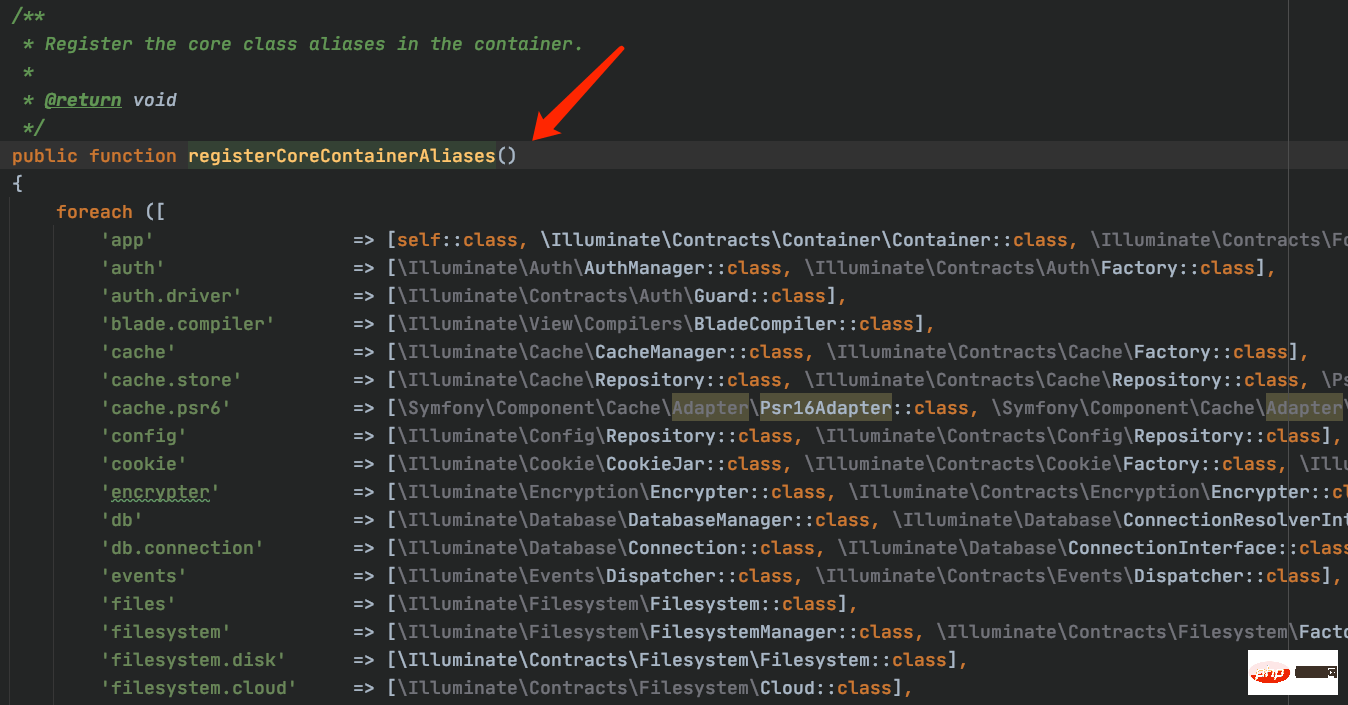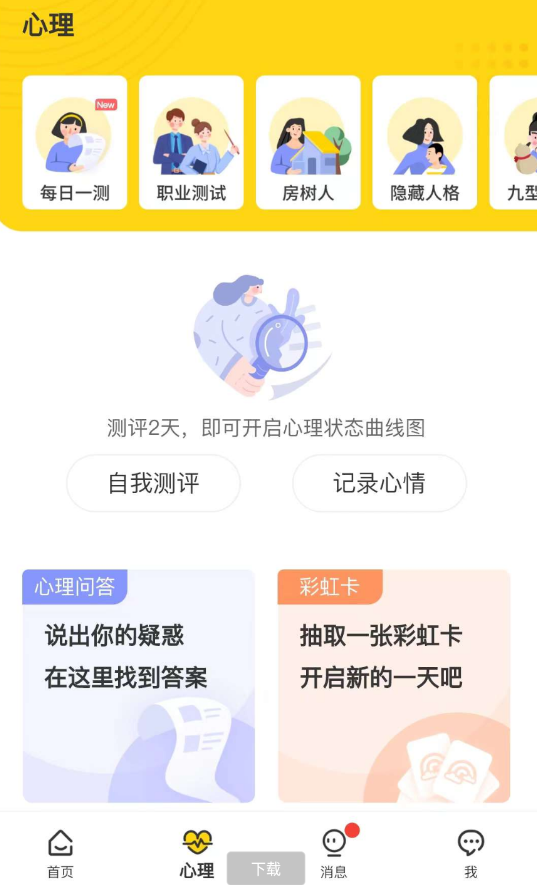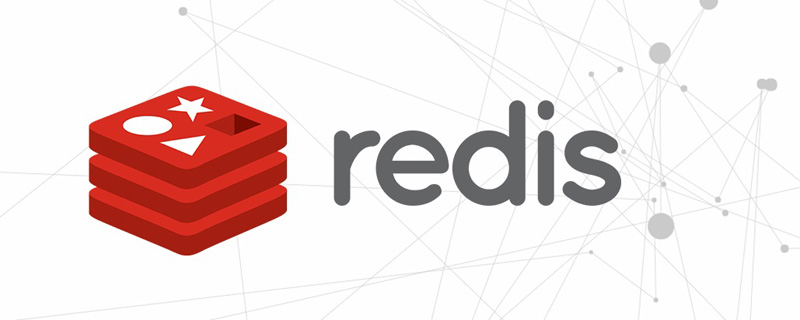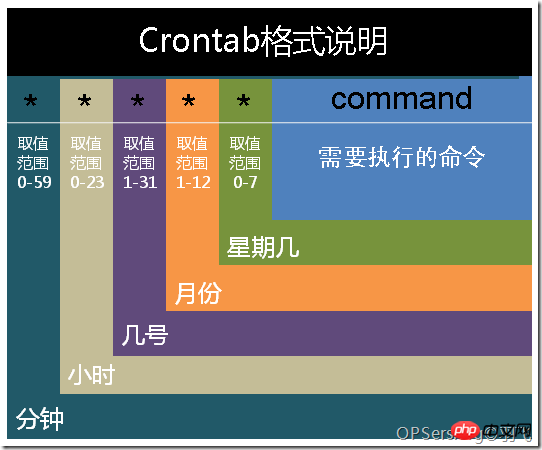下面由laravel框架教程栏目给大家介绍Laravel运行原理,希望对需要的朋友有所帮助!
前言
知其然知其所以然,刚开始接触框架的时候大不部分人肯定一脸懵逼,不知道如何实现的,没有一定的基础知识,直接去看框架的源码,只会被直接劝退,laravel 框架是一款非常优秀的 php 框架,这篇文章就是带你彻底搞懂框架的运行原理,好让你在面试的过程中有些谈资(吹牛),学习和研究优秀框架的源码也有助于我们自身技术的提升,接下来系好安全带,老司机要开始开车了!!!
准备知识
- 熟悉 php 基本知识,如常见的数组方法,闭包函数的使用,魔术方法的使用
- 熟悉 php 的反射机制和依赖注入
- 熟悉 php 命名空间概念和 compose 自动加载
- 熟悉常见的设计模式,包括但是不限于单例模式,工厂模式,门面模式,注册树模式,装饰者模式等
运行原理概述
Laravel 框架的入口文件 index.php
1、引入自动加载 autoload.php 文件
2、创建应用实例,并同时完成了
基本绑定($this、容器类Container等等)、 基本服务提供者的注册(Event、log、routing)、 核心类别名的注册(比如db、auth、config、router等)
3、开始 http 请求的处理
make 方法从容器中解析指定的值为实际的类,比如 $app->make(IlluminateContractsHttpKernel::class); 解析出来 AppHttpKernel handle 方法对 http 请求进行处理 实际上是 handle 中 sendRequestThroughRouter 处理 http 的请求 首先,将 request 绑定到共享实例 然后执行 bootstarp 方法,运行给定的引导类数组 $bootstrappers,这里是重点,包括了加载配置文件、环境变量、服务提供者、门面、异常处理、引导提供者等 之后,进入管道模式,经过中间件的处理过滤后,再进行用户请求的分发 在请求分发时,首先,查找与给定请求匹配的路由,然后执行 runRoute 方法,实际处理请求的时候 runRoute 中的 runRouteWithinStack 最后,经过 runRouteWithinStack 中的 run 方法,将请求分配到实际的控制器中,执行闭包或者方法,并得到响应结果
4、 将处理结果返回
详细源码分析
1、注册自动加载类,实现文件的自动加载
require __DIR__.'/../vendor/autoload.php';
2、创建应用容器实例 Application (该实例继承自容器类 Container),并绑定核心(web、命令行、异常),方便在需要的时候解析它们
$app = require_once __DIR__.'/../bootstrap/app.php';
app.php 文件如下:
<?php // 创建Laravel实例 【3】 $app = new IlluminateFoundationApplication( $_ENV['APP_BASE_PATH'] ?? dirname(__DIR__) ); // 绑定Web端kernel $app->singleton( IlluminateContractsHttpKernel::class, AppHttpKernel::class); // 绑定命令行kernel $app->singleton( IlluminateContractsConsoleKernel::class, AppConsoleKernel::class); // 绑定异常处理 $app->singleton( IlluminateContractsDebugExceptionHandler::class, AppExceptionsHandler::class); // 返回应用实例 return $app;
3、在创建应用实例(Application.php)的构造函数中,将基本绑定注册到容器中,并注册了所有的基本服务提供者,以及在容器中注册核心类别名
3.1、将基本绑定注册到容器中
/** * Register the basic bindings into the container. * * @return void */ protected function registerBaseBindings() { static::setInstance($this); $this->instance('app', $this); $this->instance(Container::class, $this); $this->singleton(Mix::class); $this->instance(PackageManifest::class, new PackageManifest( new Filesystem, $this->basePath(), $this->getCachedPackagesPath() )); # 注:instance方法为将...注册为共享实例,singleton方法为将...注册为共享绑定 }
3.2、注册所有基本服务提供者(事件,日志,路由)
protected function registerBaseServiceProviders() { $this->register(new EventServiceProvider($this)); $this->register(new LogServiceProvider($this)); $this->register(new RoutingServiceProvider($this)); }
3.3、在容器中注册核心类别名

4、上面完成了类的自动加载、服务提供者注册、核心类的绑定、以及基本注册的绑定
5、开始解析 http 的请求
index.php //5.1 $kernel = $app->make(IlluminateContractsHttpKernel::class); //5.2 $response = $kernel->handle( $request = IlluminateHttpRequest::capture());
5.1、make方法是从容器解析给定值
$kernel = $app->make(IlluminateContractsHttpKernel::class); 中的IlluminateContractsHttpKernel::class 是在index.php 中的$app = require_once __DIR__.'/../bootstrap/app.php';这里面进行绑定的,实际指向的就是AppHttpKernel::class这个类
5.2、这里对 http 请求进行处理
$response = $kernel->handle( $request = IlluminateHttpRequest::capture());
进入 $kernel 所代表的类 AppHttpKernel.php 中,我们可以看到其实里面只是定义了一些中间件相关的内容,并没有 handle 方法
我们再到它的父类 use IlluminateFoundationHttpKernel as HttpKernel; 中找 handle 方法,可以看到 handle 方法是这样的
public function handle($request){ try { $request->enableHttpMethodParameterOverride(); // 最核心的处理http请求的地方【6】 $response = $this->sendRequestThroughRouter($request); } catch (Exception $e) { $this->reportException($e); $response = $this->renderException($request, $e); } catch (Throwable $e) { $this->reportException($e = new FatalThrowableError($e)); $response = $this->renderException($request, $e); } $this->app['events']->dispatch( new EventsRequestHandled($request, $response) ); return $response;}
6、处理 Http 请求(将 request 绑定到共享实例,并使用管道模式处理用户请求)
vendor/laravel/framework/src/Illuminate/Foundation/Http/Kernel.php的handle方法// 最核心的处理http请求的地方$response = $this->sendRequestThroughRouter($request);protected function sendRequestThroughRouter($request){ // 将请求$request绑定到共享实例 $this->app->instance('request', $request); // 将请求request从已解析的门面实例中清除(因为已经绑定到共享实例中了,没必要再浪费资源了) Facade::clearResolvedInstance('request'); // 引导应用程序进行HTTP请求 $this->bootstrap();【7、8】 // 进入管道模式,经过中间件,然后处理用户的请求【9、10】 return (new Pipeline($this->app)) ->send($request) ->through($this->app->shouldSkipMiddleware() ? [] : $this->middleware) ->then($this->dispatchToRouter());}
7、在 bootstrap 方法中,运行给定的 引导类数组 $bootstrappers,加载配置文件、环境变量、服务提供者、门面、异常处理、引导提供者,非常重要的一步,位置在 vendor/laravel/framework/src/Illuminate/Foundation/Http/Kernel.php
/** * Bootstrap the application for HTTP requests. * * @return void */public function bootstrap(){ if (! $this->app->hasBeenBootstrapped()) { $this->app->bootstrapWith($this->bootstrappers()); }}
/** * 运行给定的引导类数组 * * @param string[] $bootstrappers * @return void */public function bootstrapWith(array $bootstrappers){ $this->hasBeenBootstrapped = true; foreach ($bootstrappers as $bootstrapper) { $this['events']->dispatch('bootstrapping: '.$bootstrapper, [$this]); $this->make($bootstrapper)->bootstrap($this); $this['events']->dispatch('bootstrapped: '.$bootstrapper, [$this]); }}/** * Get the bootstrap classes for the application. * * @return array */protected function bootstrappers(){ return $this->bootstrappers;}/** * 应用程序的引导类 * * @var array */protected $bootstrappers = [ // 加载环境变量 IlluminateFoundationBootstrapLoadEnvironmentVariables::class, // 加载config配置文件【重点】 IlluminateFoundationBootstrapLoadConfiguration::class, // 加载异常处理 IlluminateFoundationBootstrapHandleExceptions::class, // 加载门面注册 IlluminateFoundationBootstrapRegisterFacades::class, // 加载在config/app.php中的providers数组里所定义的服务【8 重点】 IlluminateFoundationBootstrapRegisterProviders::class, // 记载引导提供者 IlluminateFoundationBootstrapBootProviders::class,];
8、加载 config/app.php 中的 providers 数组里定义的服务
IlluminateAuthAuthServiceProvider::class,IlluminateBroadcastingBroadcastServiceProvider::class,....../** * 自己添加的服务提供者 */AppProvidersHelperServiceProvider::class,
可以看到,关于常用的 redis、Session、queue、auth、database、Route 等服务都是在这里进行加载的
9、使用管道模式处理用户请求,先经过中间件进行处理和过滤
return (new Pipeline($this->app)) ->send($request) // 如果没有为程序禁用中间件,则加载中间件(位置在app/Http/Kernel.php的$middleware属性) ->through($this->app->shouldSkipMiddleware() ? [] : $this->middleware) ->then($this->dispatchToRouter());}
app/Http/Kernel.php
/** * 应用程序的全局HTTP中间件 * * These middleware are run during every request to your application. * * @var array */protected $middleware = [ AppHttpMiddlewareTrustProxies::class, AppHttpMiddlewareCheckForMaintenanceMode::class, IlluminateFoundationHttpMiddlewareValidatePostSize::class, AppHttpMiddlewareTrimStrings::class, IlluminateFoundationHttpMiddlewareConvertEmptyStringsToNull::class,];
10、经过中间件处理后,再进行请求分发(包括查找匹配路由)
/** * 10.1 通过中间件/路由器发送给定的请求 * * @param IlluminateHttpRequest $request * @return IlluminateHttpResponse */ protected function sendRequestThroughRouter($request){ ... return (new Pipeline($this->app)) ... // 进行请求分发 ->then($this->dispatchToRouter());}
/** * 10.2 获取路由调度程序回调 * * @return Closure */protected function dispatchToRouter(){ return function ($request) { $this->app->instance('request', $request); // 将请求发送到应用程序 return $this->router->dispatch($request); };}
/** * 10.3 将请求发送到应用程序 * * @param IlluminateHttpRequest $request * @return IlluminateHttpResponse|IlluminateHttpJsonResponse */ public function dispatch(Request $request){ $this->currentRequest = $request; return $this->dispatchToRoute($request);}
/** * 10.4 将请求分派到路由并返回响应【重点在runRoute方法】 * * @param IlluminateHttpRequest $request * @return IlluminateHttpResponse|IlluminateHttpJsonResponse */public function dispatchToRoute(Request $request){ return $this->runRoute($request, $this->findRoute($request));}
/** * 10.5 查找与给定请求匹配的路由 * * @param IlluminateHttpRequest $request * @return IlluminateRoutingRoute */protected function findRoute($request){ $this->current = $route = $this->routes->match($request); $this->container->instance(Route::class, $route); return $route;}
/** * 10.6 查找与给定请求匹配的第一条路由 * * @param IlluminateHttpRequest $request * @return IlluminateRoutingRoute * * @throws SymfonyComponentHttpKernelExceptionNotFoundHttpException */public function match(Request $request){ // 获取用户的请求类型(get、post、delete、put),然后根据请求类型选择对应的路由 $routes = $this->get($request->getMethod()); // 匹配路由 $route = $this->matchAgainstRoutes($routes, $request); if (! is_null($route)) { return $route->bind($request); } $others = $this->checkForAlternateVerbs($request); if (count($others) > 0) { return $this->getRouteForMethods($request, $others); } throw new NotFoundHttpException;}
到现在,已经找到与请求相匹配的路由了,之后将运行了,也就是 10.4 中的 runRoute 方法
/** * 10.7 返回给定路线的响应 * * @param IlluminateHttpRequest $request * @param IlluminateRoutingRoute $route * @return IlluminateHttpResponse|IlluminateHttpJsonResponse */protected function runRoute(Request $request, Route $route){ $request->setRouteResolver(function () use ($route) { return $route; }); $this->events->dispatch(new EventsRouteMatched($route, $request)); return $this->prepareResponse($request, $this->runRouteWithinStack($route, $request) );}
/** * Run the given route within a Stack "onion" instance. * 10.8 在栈中运行路由,先检查有没有控制器中间件,如果有先运行控制器中间件 * * @param IlluminateRoutingRoute $route * @param IlluminateHttpRequest $request * @return mixed */protected function runRouteWithinStack(Route $route, Request $request){ $shouldSkipMiddleware = $this->container->bound('middleware.disable') && $this->container->make('middleware.disable') === true; $middleware = $shouldSkipMiddleware ? [] : $this->gatherRouteMiddleware($route); return (new Pipeline($this->container)) ->send($request) ->through($middleware) ->then(function ($request) use ($route) { return $this->prepareResponse( $request, $route->run() ); });}
/** * Run the route action and return the response. * 10.9 最后一步,运行控制器的方法,处理数据 * @return mixed */ public function run() { $this->container = $this->container ?: new Container; try { if ($this->isControllerAction()) { return $this->runController(); } return $this->runCallable(); } catch (HttpResponseException $e) { return $e->getResponse(); } }
11、运行路由并返回响应(重点)
可以看到,10.7 中有一个方法是 prepareResponse,该方法是从给定值创建响应实例,而 runRouteWithinStack 方法则是在栈中运行路由,也就是说,http 的请求和响应都将在这里完成。
总结
到此为止,整个 Laravel 框架的运行流程就分析完毕了,揭开了 Laravel 框架的神秘面纱,其中为了文章的可读性,只给出了核心代码,需要大家结合文章自行去阅读源码,需要注意的是必须了解文章中提到的准备知识,这是阅读框架源码的前提和基础,希望大家有所收获,下车!!!

















